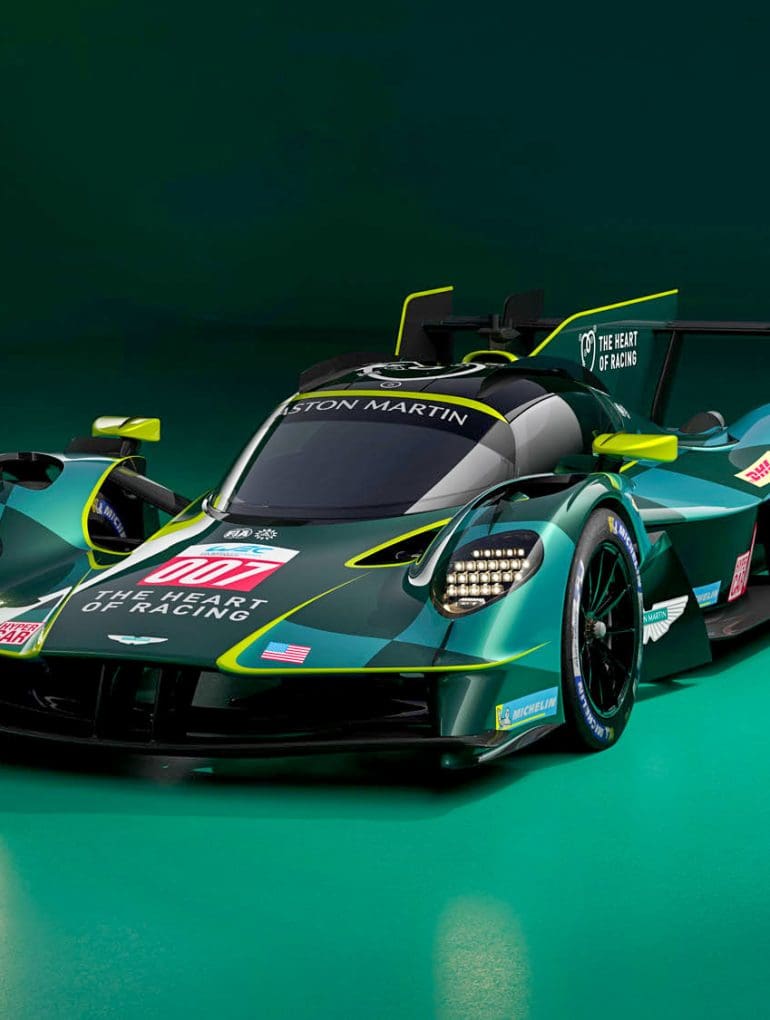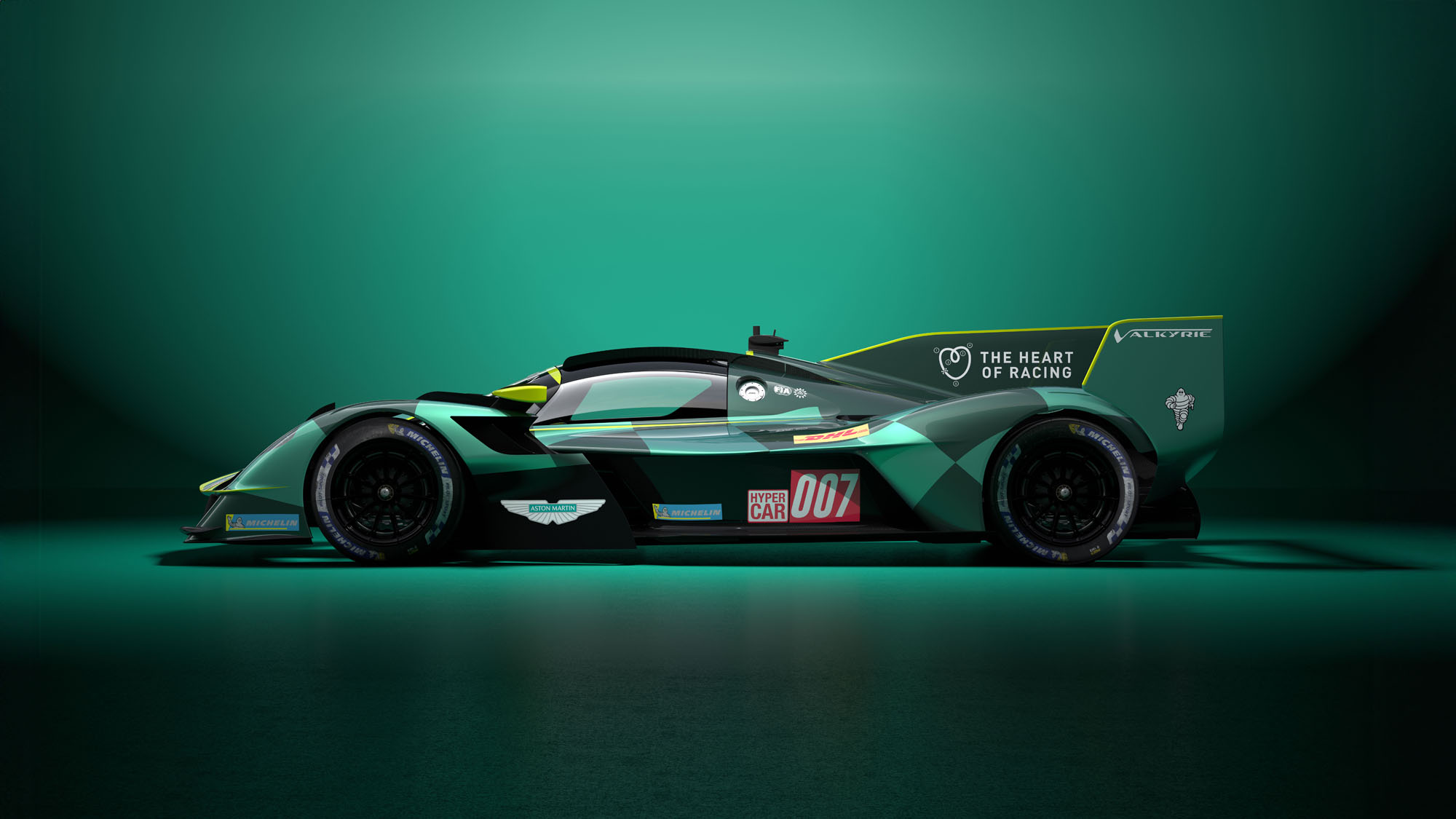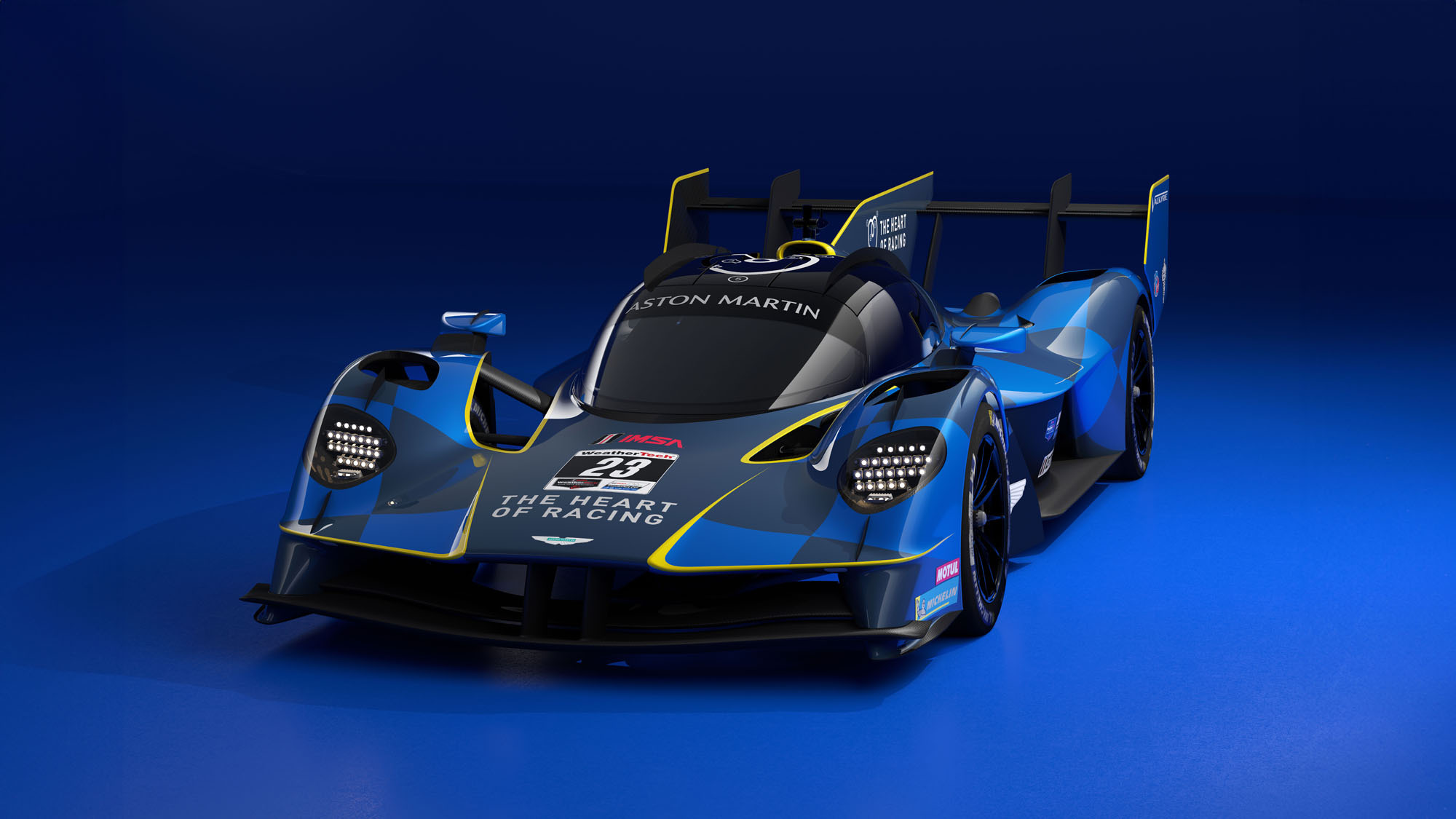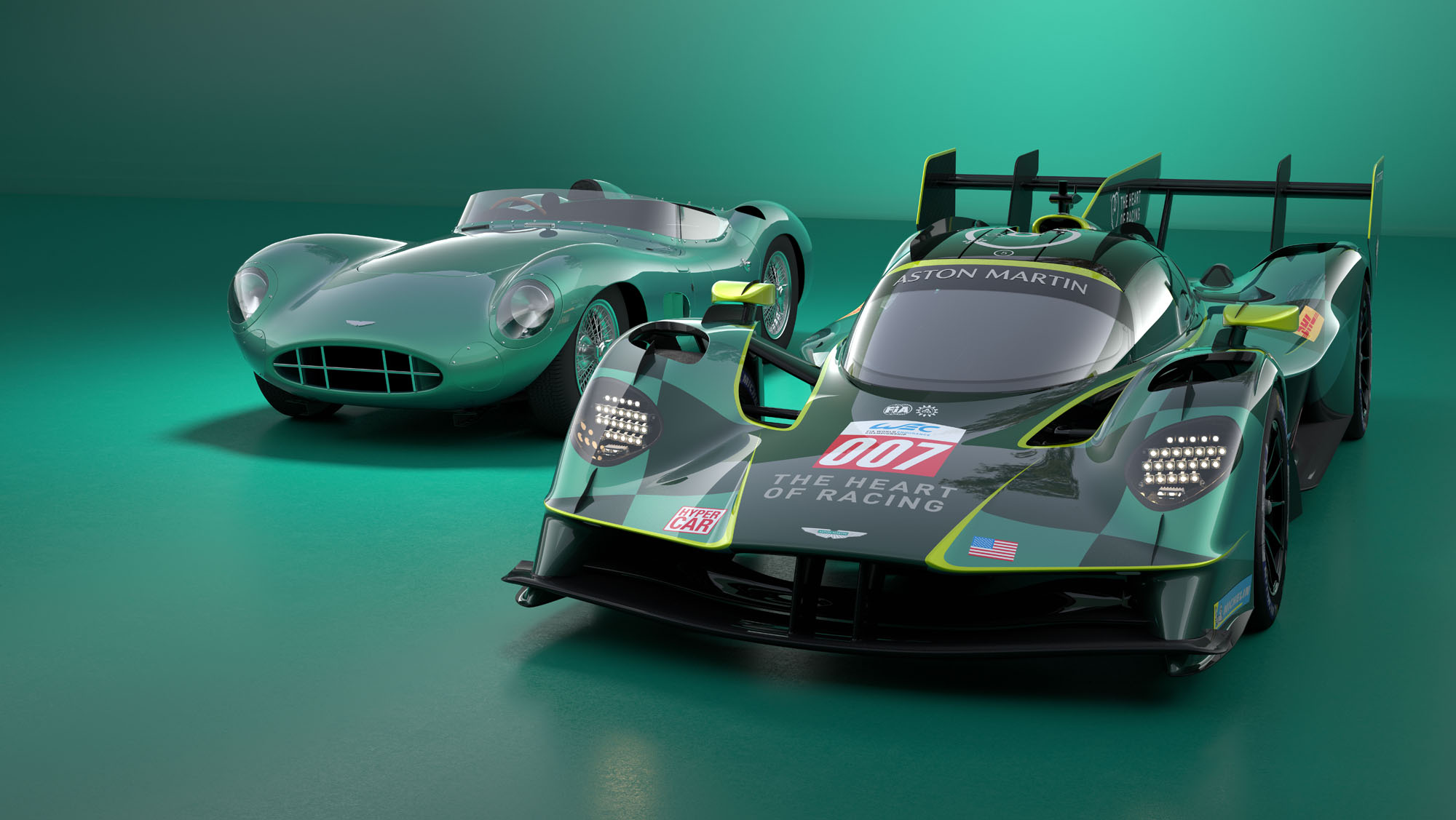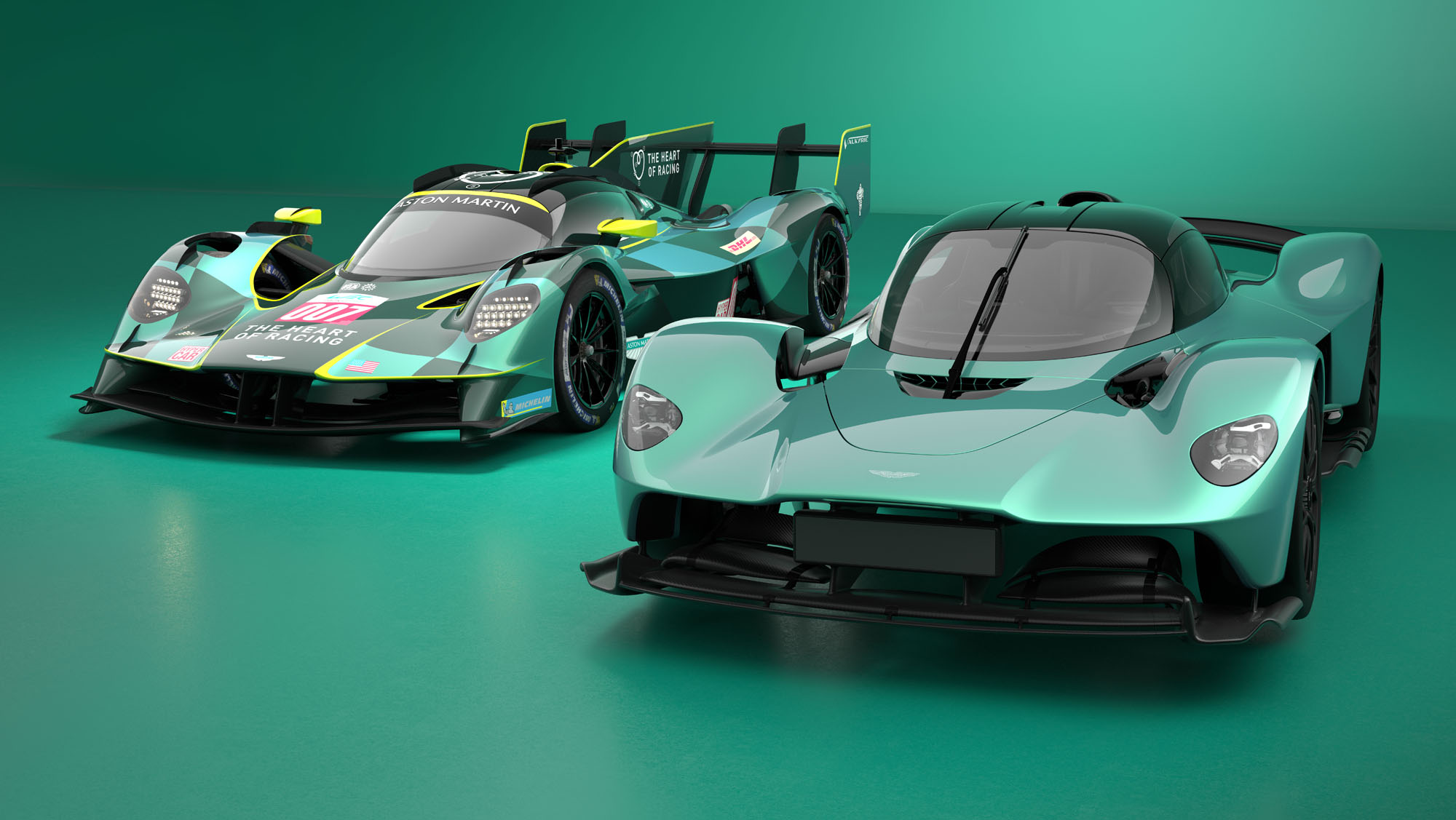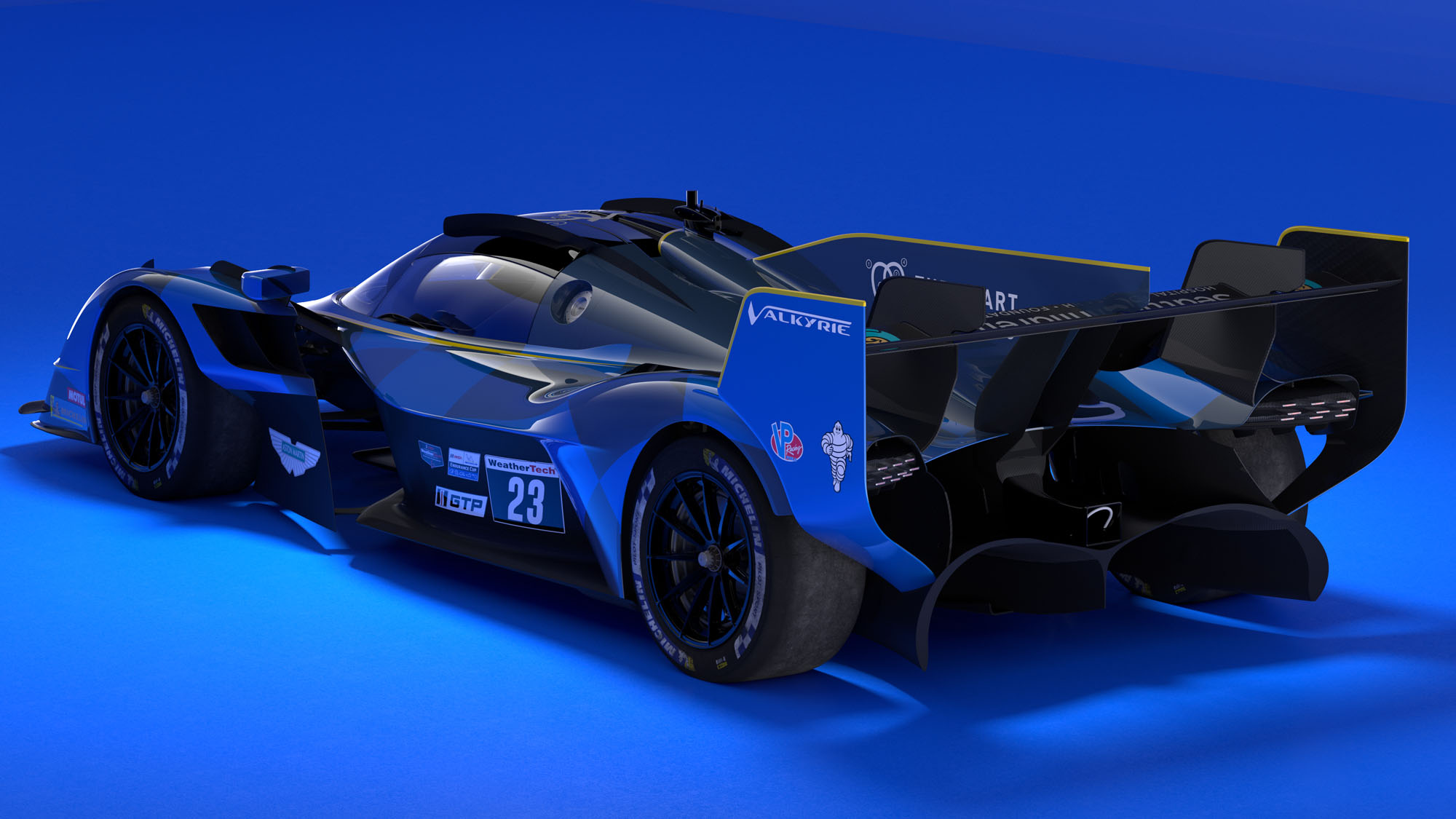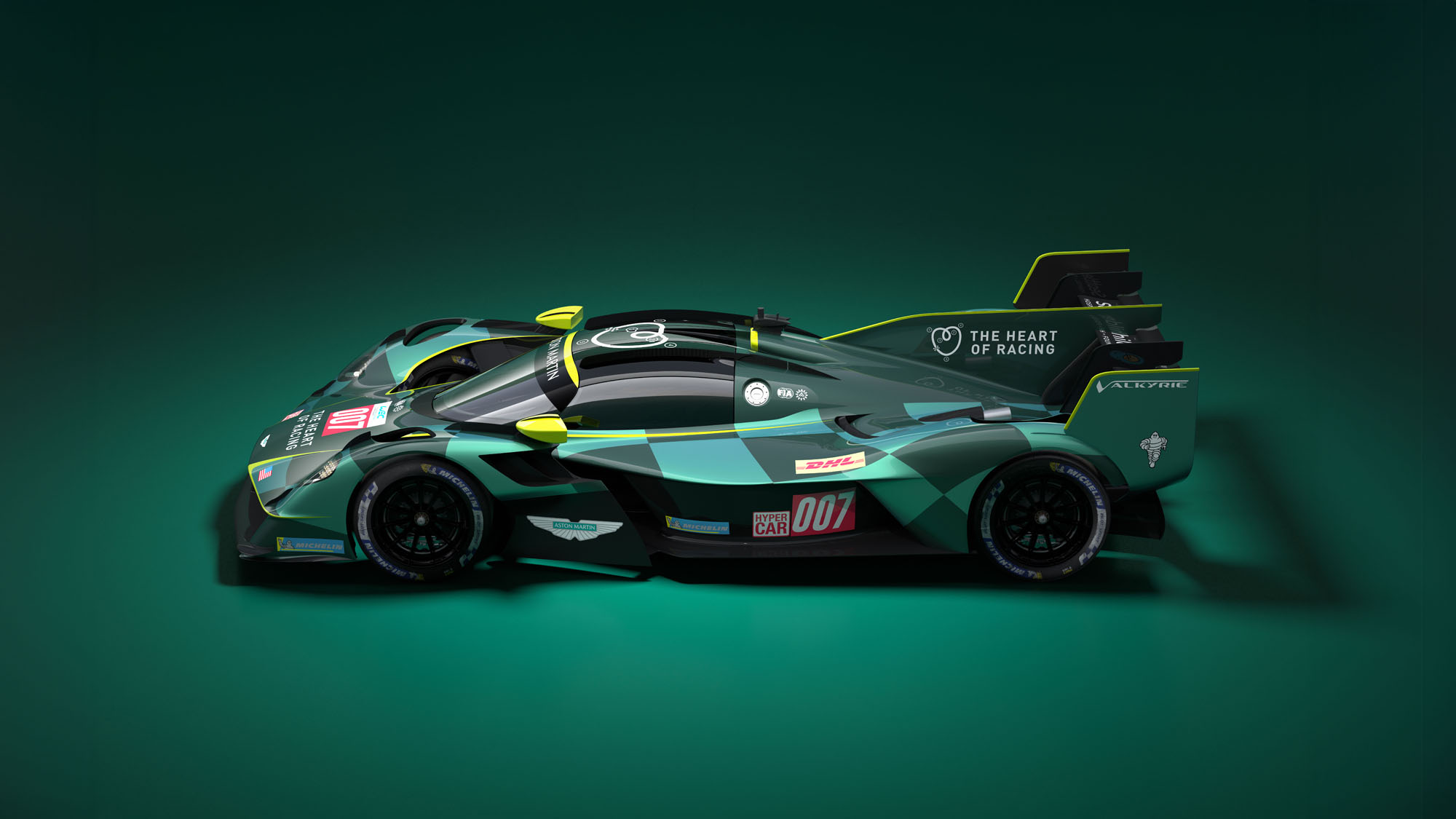Aston Martin begins a thrilling new chapter in its illustrious competition history with the reveal of its Valkyrie hypercar – a pure racer bred from the road that will return the British ultra-luxury performance car brand to the pinnacle of endurance motor sport and allow it to bid for overall victory at the 24 Hours of Le Mans.
The only competitor that is derived from a road-legal hypercar, the Valkyrie is the first racing car built to the FIA’s ‘Hypercar’ regulations that will contest both the FIA World Endurance Championship [WEC] and the US-based IMSA WeatherTech Sportscar Championship [IMSA]. It will make its world competition debut when the works Aston Martin THOR Team enters two Valkyries in the opening round of the 2025 WEC, at the Qatar 1812Km on 28 February.
All-British driver line-up for Le Mans
Harry Tincknell, Aston Martin’s most recent British 24 Hours of Le Mans class winner, will be joined by countryman and rising endurance star Tom Gamble in the #007 Valkyrie for the full WEC season, while the sister #009 car will be driven by triple FIA GT World Champion Marco Sørensen (DEN) and WEC LMGT3 class race winner Alex Riberas (ESP).
In IMSA, 2024 IMSA GTD Pro championship contender Ross Gunn (GBR) and 2022 GTD class champion Roman De Angelis (CDN) will drive the single Aston Martin THOR Team #23 entry in the GTP class. Both Gunn and De Angelis will also join the WEC contenders to complete the three-driver line-ups at Le Mans. Gunn will drive the #007 Valkyrie with Tincknell and Gamble to complete an all-British partnership for the race on 14-15 June.
The factory Valkyrie racing campaign is masterminded in both WEC and IMSA by The Heart of Racing [THOR], which has previously run Aston Martin’s Vantage GT3 in both series.
The ultimate road-legal hypercar developed for the track
The new car, developed by Aston Martin Performance Technologies and THOR, is unique in the top Hypercar division of global endurance motorsport in that it is the only one among its contemporaries to derive its roots from an existing production-based extreme performance car – Aston Martin Valkyrie, the ultimate hypercar.
Adam Carter, Aston Martin’s Head of Endurance Motorsport said: “The Aston Martin Valkyrie is not just a hypercar; it is a revolution in automotive engineering history representing the pinnacle of performance, design and innovation. With an extraordinary fusion of F1® technology and road car mastery, Valkyrie is truly built for racing and its participation in the highest level of world endurance racing will only further cement its technological achievement.
The race-optimized carbon fiber chassis Valkyrie is powered by a modified, lean-burn version of the sensational Cosworth-built 6.5-litre naturally aspirated V12 engine, which in standard road-going form revs to 11,000rpm and develops over 1000bhp. The power unit is enhanced and adapted to meet the performance window of the Hypercar class and developed to withstand the rigors of top-level long-distance competition. The choice of a V12 throughout the Valkyrie bloodline offers clear performance benefits, while also matching the Aston Martin aesthetic for a pure racing solution.
On reliability and durability, the hypercar regulations, including a power limit of 500kW (680bhp), offer advantages for a V12 that had robustness built in from its inception to match its high-duty cycle as a road car. For racing, fuel efficiency has become a particular focus of development.
On aerodynamics, the evolution of the Valkyrie hypercar was developed to meet the regulation homologation criteria and was enabled by the solid baseline rooted in the road car, created by its architects Aston Martin Chief Creative Officer Marek Reichman and Adrian Newey – who in March 2025 joins Aston Martin as managing technical partner of Formula 1® team. “It would be almost unimaginable for Adrian, one of the greatest racing car designers in history, to design a car and not think about it going racing at some point,” says Carter.
The transformation from road to race car is dictated predominantly by the FIA’s technical regulations written for the specific parameters of competition, in terms of both safety and performance. To meet the challenges of racing, including rapid driver and tire changes and live refueling at pitstops, plus the possibility of car-to-car contact, developments include quick-change front and rear bodywork, a single-point rapid refueling coupling, a high-speed pneumatic jack system incorporated into the chassis and a driver cockpit optimized for safety, quick access and visibility.
The racing suspension configuration features double wishbones front and rear, pushrod-actuated torsion bar springs, and adjustable side and central dampers. The Valkyrie runs on 18-inch Michelin Pilot Sport tires, which are mandatory under the Hypercar regulations. That approach has also dictated key design decisions in the specification of the racing car, including its Xtrac seven-speed sequential transmission operated by semi-automatic paddle shift gear change.
Preparations for a dual race program
Since the Valkyrie hypercar’s first test runs in July 2024, The Heart of Racing has embarked on an extensive evaluation program, which has topped 15,000km. Testing began in the UK at Donington Park and Silverstone, then moved on to Vallelunga and Jerez, before continuing in Bahrain, Qatar, Road Atlanta, Sebring and Daytona to ensure a cross-section of tracks appropriate to the dual race program.
Two Valkyries have been entered for the WEC season, emblazoned in a stunning green livery synonymous with many of the great British motorsport glories at Le Mans, run from The Heart of Racing’s British base in Brackley.
Tom Gamble is a former winner of the Aston Martin Autosport BRDC Award who has both LMP2 and GT experience, including with The Heart of Racing, having driven for the team in IMSA’s endurance races at Daytona, Sebring and Road Atlanta in 2022. “I rate him very highly as a natural talent and he deserves a chance in the spotlight at the highest level of sports car racing,” says James.
Marco Sørensen is Aston Martin’s most successful active racing driver, as a three-time WEC GT class champion and a class winner at Le Mans in 2022. “He’s among the most experienced and successful drivers to ever race for Aston Martin and he’s waited a long time for his chance at the top class,” says James. “Having worked with him, having seen his ability and how cool he is under pressure, I think he’s a perfect fit for this program.
A single Valkyrie will compete in IMSA, running in a special version of the distinctive THOR blue livery, starting from the Sebring 12 Hours on 12-15 March and will be run from the team’s US base in Phoenix, Arizona. Multiple IMSA GTD Pro class race winner Gunn (GBR) and 2022 IMSA GTD champion De Angelis (CDN) are both previous AMR Driver Academy winners.
Embracing the challenge
Expectations for the dual Valkyrie race program match high ambition with the reality of competing against seasoned rivals. “Of course, we only do it because we want to win,” says Carter. “However, we respect the challenge of the events and the competition. They are at a high level, and that’s why we want to compete against them. Fundamentally, it is only worth winning if it’s against strong competition. We acknowledge that we will be joining them when they are already established.
The WEC season has eight rounds. Following the season opener in Qatar, the championship includes European races at Imola and Spa-Francorchamps, the 24 Hours of Le Mans in June, Interlagos in Brazil, COTA in Austin, Texas, Fuji in Japan, and the finale in Bahrain on November 8. The IMSA schedule includes 11 rounds, including the Sebring 12 Hours and Petit Le Mans at Road Atlanta, plus other major US venues such as Long Beach, Laguna Seca, Watkins Glen, and the Indianapolis Motor Speedway.
Above content © 2025 Aston Martin, reviewed and edited by Rex McAfee


